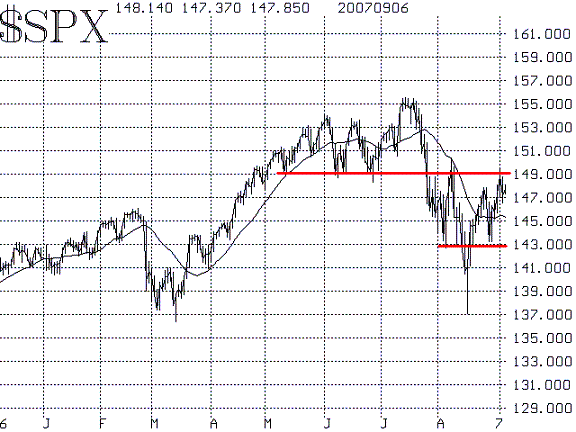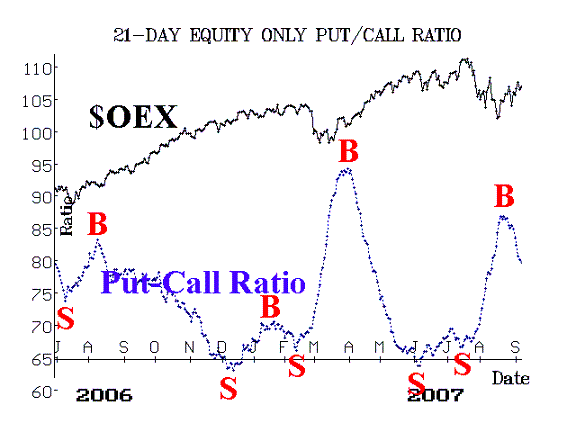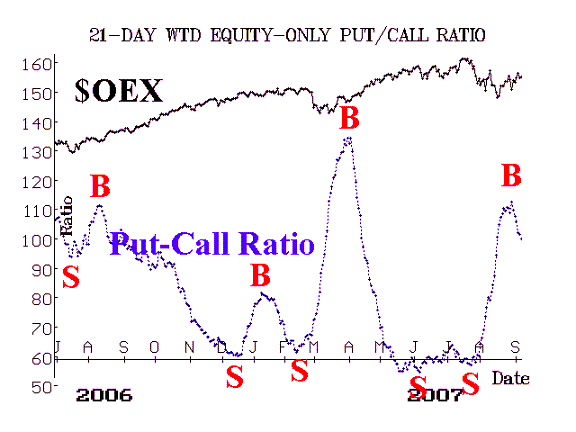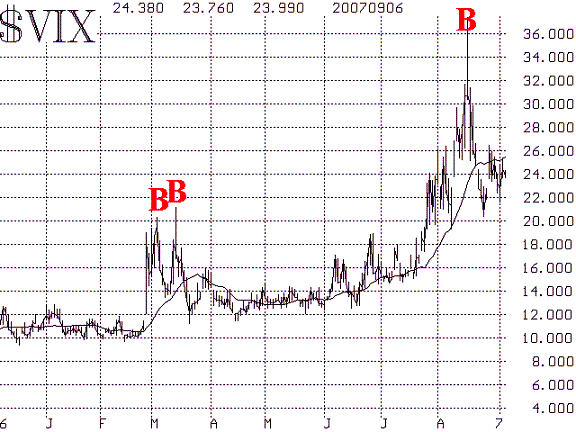| The McMillan Options Strategist Weekly |
| By Lawrence G. McMillan |
Published
09/7/2007
|
Options
|
Unrated
|
|
|
|
The McMillan Options Strategist Weekly
The broad stock market is trapped in a volatile trading range, for the moment. We do not expect it to stay within that range for an extended period of time. Using $SPX as a reference, the upside is bounded by the resistance area at 1480-1490, or slightly above--a level which has retarded every advance since early August. On the downside, the most recent support was at the 1430 level, although below that there is further support at 1410. At the farthest points, $SPX spiked up to 1505 and down to 1370. It might not be necessary for those extremes to be exceeded in order for a breakout to develop. Rather, a 2-day close above 1490 or below 1406 would establish new closing extremes and would probably suffice to establish the market's direction.

The equity-only put-call ratios continue to remain on buy signals. These are by far the most bullish of our indicators at the current time. However, it is always our policy that we require confirmation from the underlying chart before acting on a put-call ratio buy signal. In this case, that means we require the upside breakout by $SPX to go along with these put-call ratio buy signals.

Market breadth has followed the market back and forth. The most recent signal occurred when the breadth got overbought after the rally from 1430 to 1490, and then issued sell signals yesterday when the market fell.

Finally, the volatility indices ($VIX and $VXO) have not retreated much. $VIX remains near 25, partly because the actual volatility of $SPX is near that level, but also partly because traders remain nervous about the upcoming market action. As long as $VIX remains at these fairly high levels --above 20, say-- it is a modestly negative indicator as well. A collapse back into the teens would be a bullish signal from $VIX.

In summary, even though the broad market has improved since mid-August, it has been unable to confirm the upside breakout that is needed for an intermediate-term bullish signal. As a result, a bearish scenario could still develop. Hence, traders and investors should exercise caution, using expensive option premium sales to hedge the ownership of stocks.
Lawrence G. McMillan is the author of two best selling books on options, including Options as a Strategic Investment, recognized as essential resources for any serious option trader's library.
|